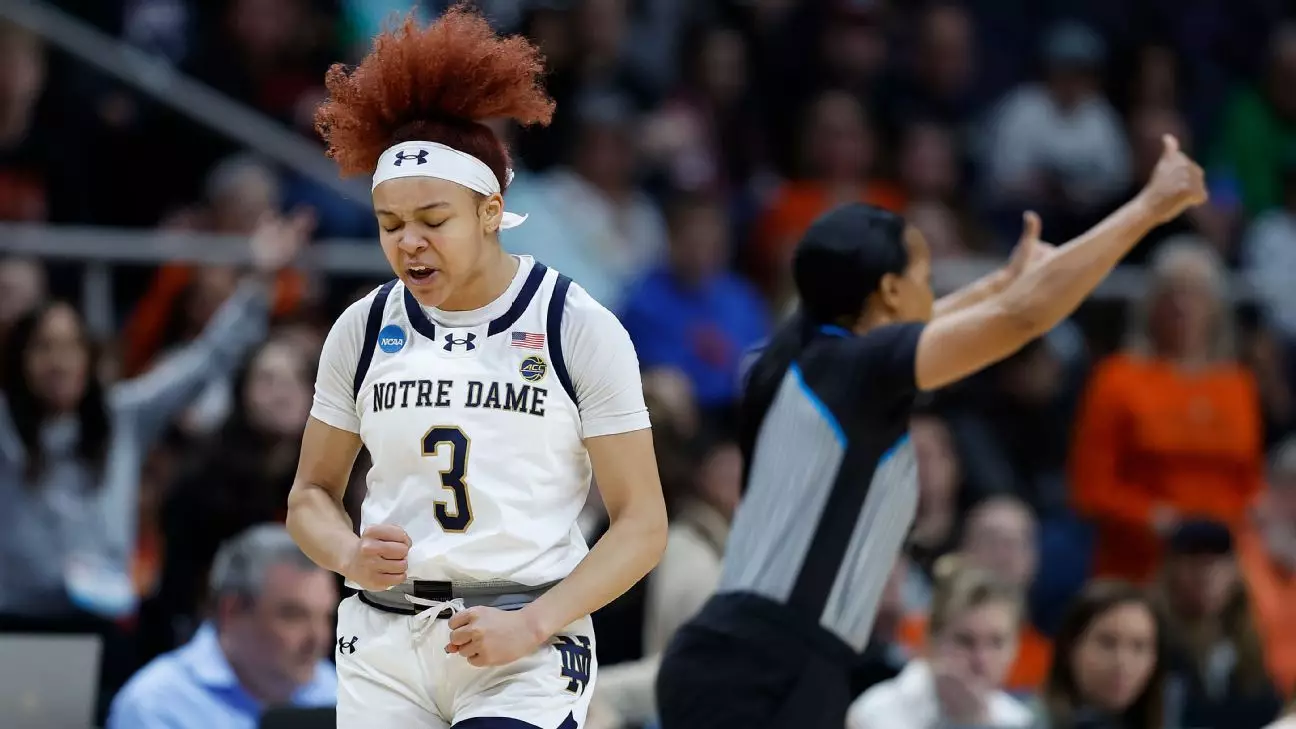During a critical moment in Notre Dame’s game against Oregon State in the Sweet 16, freshman All-American Hannah Hidalgo was faced with an unexpected challenge. Despite having played the entire season with a nose ring, Hidalgo was forced to remove it mid-game as game officials cited an NCAA rule prohibiting jewelry during games. This decision came as a surprise to Hidalgo, coach Niele Ivey, and the team’s bench, causing confusion and disruption during the game.
The abrupt stoppage in play as athletic trainers struggled to remove the nose ring had a visible impact on Hidalgo’s performance. The player expressed her frustration in a postgame interview, highlighting the disruption to her momentum and the physical discomfort she experienced during the process. Hidalgo’s production suffered as she tied a season-low with 10 points and struggled with her shooting accuracy, missing all of her open field goal attempts. When questioned about the reasons behind her performance, Hidalgo expressed uncertainty, indicating that the situation had affected her gameplay.
Coach Ivey also voiced her frustration with the lack of communication and preparation regarding the enforcement of the rule. The team was taken by surprise by the decision and the timing of its enforcement, leading to a disruption in their flow and focus during the game. Ivey emphasized the need for prior knowledge of such regulations to avoid similar issues in the future and maintain consistency in player performance.
On the opposing side, Oregon State coach Scott Rueck credited his team’s defensive efforts and strategic gameplay for disrupting Hidalgo’s performance on the court. Rueck highlighted his players’ ability to stay in front of Hidalgo and maintain defensive pressure, causing difficulties for the talented shooter throughout the game. This method of disrupting top shooters had been successful for Oregon State in the past, showcasing their disciplined approach to defense.
The NCAA’s enforcement of rules regarding player attire and jewelry raised questions about the impact of such decisions on the course of a game. The inconsistent application of regulations during a critical match like the Sweet 16 can have unforeseen consequences on player performance and team dynamics. The lack of communication and explanation during the game further complicates the situation, leading to frustration and confusion among players and coaches.
The enforcement of NCAA rules regarding player attire and jewelry during games can have significant implications on player performance and team dynamics. The unexpected removal of Hannah Hidalgo’s nose ring mid-game resulted in visible disruptions and impacted her ability to contribute effectively to her team. Coaches and players alike emphasized the need for clear communication and prior knowledge of such regulations to prevent similar incidents in the future. The strategic defensive efforts of opponents like Oregon State further compounded the challenges faced by players in high-stakes matchups like the Sweet 16, highlighting the importance of preparation and adaptability in competitive sports.

Leave a Reply